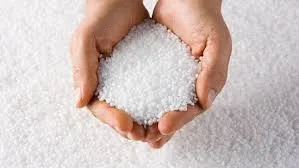What Additives Are Used in Plastics?
Plastics have become an integral part of our daily lives, from packaging materials to automotive components and electronic devices. However, the versatility of plastics is not solely due to the polymer base materials; it is also significantly enhanced by the various additives used during the manufacturing process. These additives serve multiple functions, improving the performance, durability, and processing characteristics of the plastics. In this article, we will explore the different types of additives used in plastics and their specific roles.
Types of Additives
1. Stabilizers Stabilizers are essential for enhancing the longevity of plastic products. They help to protect plastics from degradation caused by environmental factors such as UV radiation, heat, and oxidation. Common stabilizers include UV absorbers and antioxidants, which minimize color fading and structural weakening over time.
2. Plasticizers Plasticizers are additives that increase the flexibility and workability of plastics. By incorporating plasticizers, polymers can become softer and more pliable, allowing them to be molded into various shapes without compromising strength. Phthalates have been common plasticizers, although concerns over their safety have led to a search for alternative options such as citrate-based plasticizers.
3. Fillers Fillers are added to plastics to reduce costs, improve mechanical properties, and alter physical characteristics. For instance, talc, calcium carbonate, and wood fibers can enhance rigidity, dimensional stability, and thermal resistance. In some cases, fillers can also enhance the appearance of plastic products by improving opacity and sheen.
4. Flame Retardants Flame retardants are critical for safety, particularly in consumer products and electronics. These additives are designed to inhibit or delay the ignition of materials, reducing the flammability of the final product. Halogenated compounds, phosphorous-based additives, and non-halogenated alternatives are commonly used flame retardants, each offering a range of efficacy and environmental considerations.
what additives are used in plastics

5. Colorants Colorants give plastics their vibrant hues and can affect the visual appeal of a product. They can be used in powder, liquid, or masterbatch forms. Dyes and pigments can be incorporated to achieve desired colors, while certain additives also provide additional benefits like improved UV resistance or reduced migration risks.
6. Antimicrobial Agents With the rise of health-conscious consumers, antimicrobial agents have gained popularity in plastic manufacturing. These additives inhibit the growth of bacteria, mold, and fungi on plastic surfaces, making them ideal for medical devices, food packaging, and household materials. Silver nanoparticles and organic biocides are common choices.
7. Processing Aids Processing aids are used to facilitate the manufacturing process of plastics. They improve flow characteristics, reduce viscosity, and enhance dispersion of fillers and other additives. These aids are particularly important in complex processes like extrusion and injection molding where consistent flow is crucial for product quality.
8. Blowing Agents Blowing agents create a cellular structure within plastics, making them lightweight and insulating. They can be physical or chemical agents that release gases during the heating process, resulting in foamed plastics. Common examples include azodicarbonamide and sodium bicarbonate, widely used in producing cushioning materials and thermal insulation.
Conclusion
The world of plastic additives is vast and multifaceted, combining chemistry and engineering to enhance the functionality of plastic materials. As we grow more aware of environmental challenges and health implications, the industry is also shifting towards greener alternatives and sustainable practices in additive manufacturing. This ongoing evolution aims to provide safer, more efficient, and environmentally-friendly plastic products while ensuring performance and consumer satisfaction. Understanding the role and impact of these additives not only enriches our knowledge about the materials we use but also empowers consumers to make informed choices in an increasingly complex and curated consumer landscape. As research progresses, new advancements are expected to continue transforming the realm of plastics, paving the way for innovations that align with sustainable development goals.

